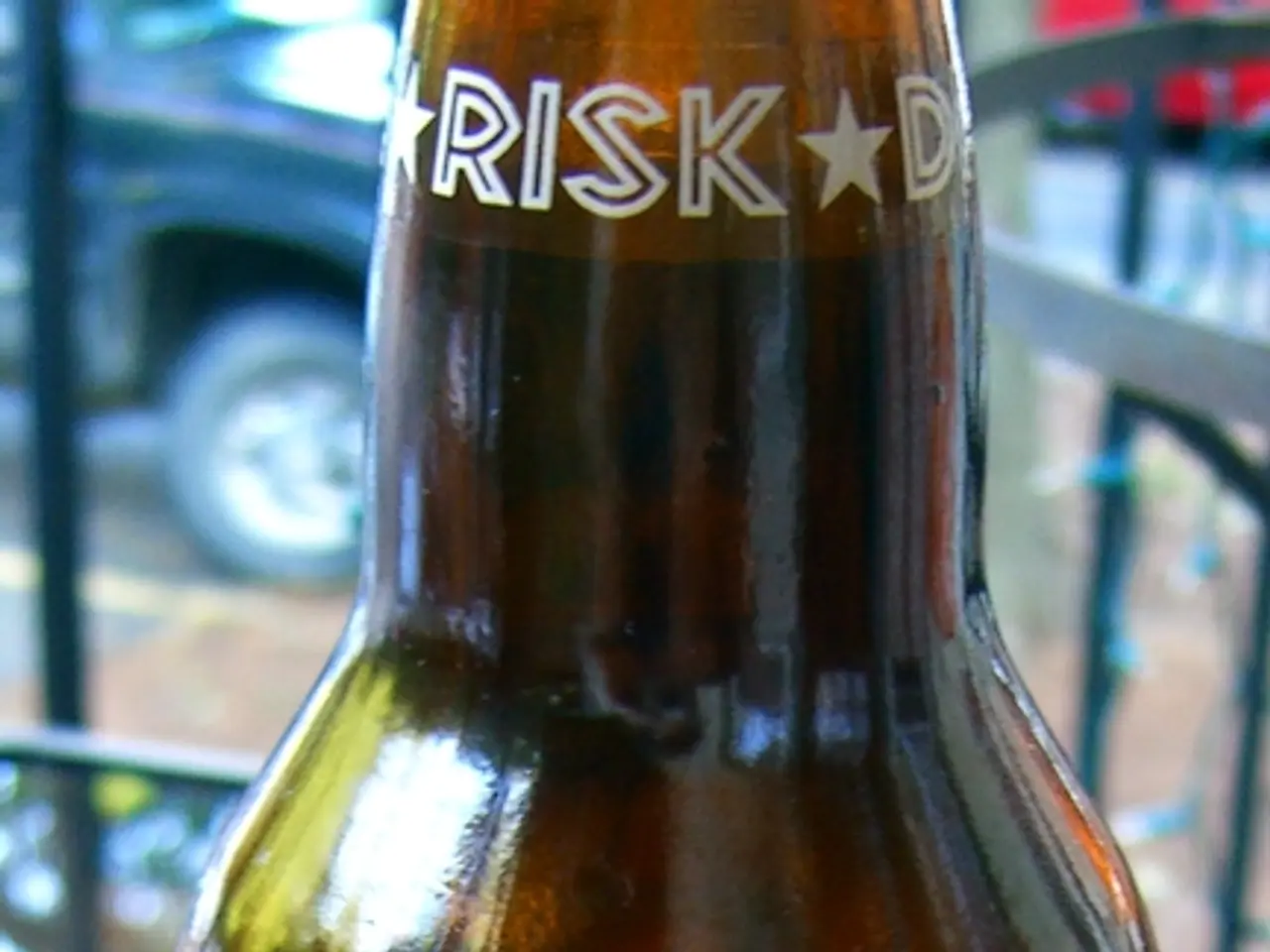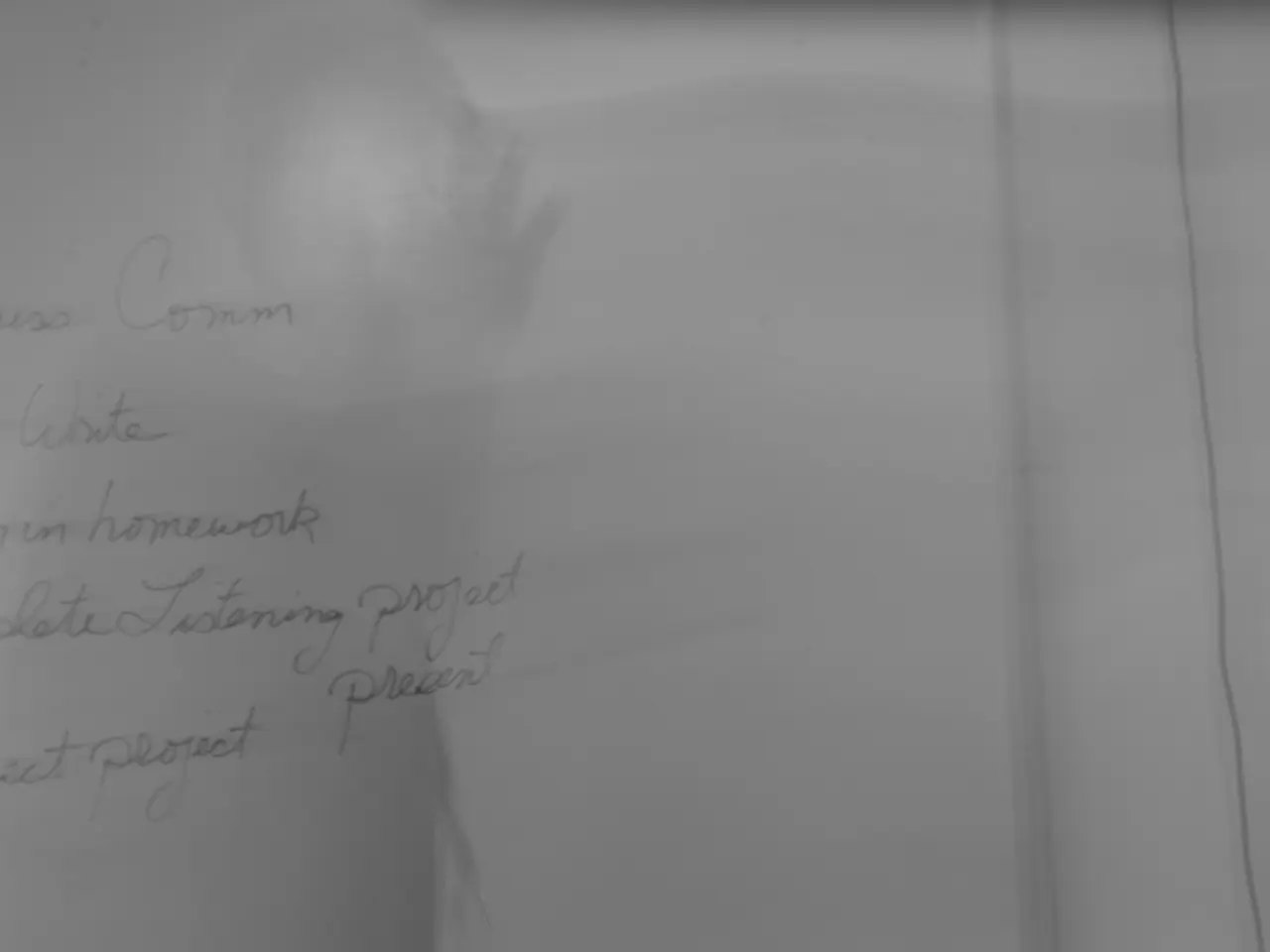Potential impending stock market crash regarded as a significant concern.
In the world of finance, the Schiller P/E ratio, also known as the Cyclically Adjusted Price-to-Earnings ratio (CAPE), has been causing a stir recently. This metric, which compares the current price of a stock or an index to the average inflation-adjusted earnings of the past ten years, has reached levels not seen in over 150 years.
Historically, the Schiller P/E ratio has served as a valuable tool for investors seeking to predict the future performance of stock markets. Each time it reached around 38 during an uptrend, a crash followed. For instance, in December 1999, the ratio peaked at 44 before the dot-com bubble burst. More recently, on November 13 of this year, the CAPE ratio was again above 38.
As of mid-2025, the CAPE ratio for major indices like the S&P 500 is around 36 to 36.1, placing current valuations in the top 10% percentile historically. This implies that at least 90% of the time, valuations have been lower. Such high CAPE levels have historically correlated with below-average 10-year forward returns, suggesting that while the market can remain high for some time, the long-term growth outlook tends to be muted or negative after such valuation extremes.
The elevated valuation also reflects investor optimism fueled by factors like hopes for Federal Reserve rate cuts and strong corporate earnings. However, caution is warranted. Market concentration in a few large tech and consumer companies amplifies risk since any earnings disappointment here can trigger sharp declines, as in past bubbles.
Analysts caution that despite structural shifts sometimes cited to justify higher multiples, the data does not support sustained premium valuations. This increases the risk that the current rally is fragile and may be followed by corrections.
It's important to note that a high Schiller P/E ratio (25 or more) suggests an impending crash in stock markets. However, no indicator can predict the future with certainty, and many predictions about stock market performance are controversial.
Investors don't need to panic-sell based on these prospects. Instead, they should prepare for potentially lower long-term returns and higher volatility. The high CAPE level serves as a warning that the market is less likely to deliver strong gains going forward and more prone to corrections based on past patterns.
Recessions have historically been less durable than bull markets. Long-term-oriented investors can likely weather the storm if markets crash. However, it's crucial to have a well-diversified portfolio and to revisit investment strategies regularly to ensure they align with market conditions.
In conclusion, the current high Schiller P/E ratio signals that the stock market is expensive relative to historical norms. Investors should prepare for potentially lower long-term returns and higher volatility. While this does not mean a crash is imminent, it does suggest that the market's trajectory may be less favourable than it has been in the recent past.
Investors should consider the high Schiller P/E ratio as a warning sign, implying that the stock market's trajectory may be less favorable and potentially delivering lower long-term returns due to the elevated valuations. As smart investors look to the future, they should be aware that currently, the CAPE ratio places the market in the top 10% percentile historically, suggesting that there might be a higher risk of corrections and below-average 10-year forward returns, especially in the world of finance when it comes to investing in the stock-market.




